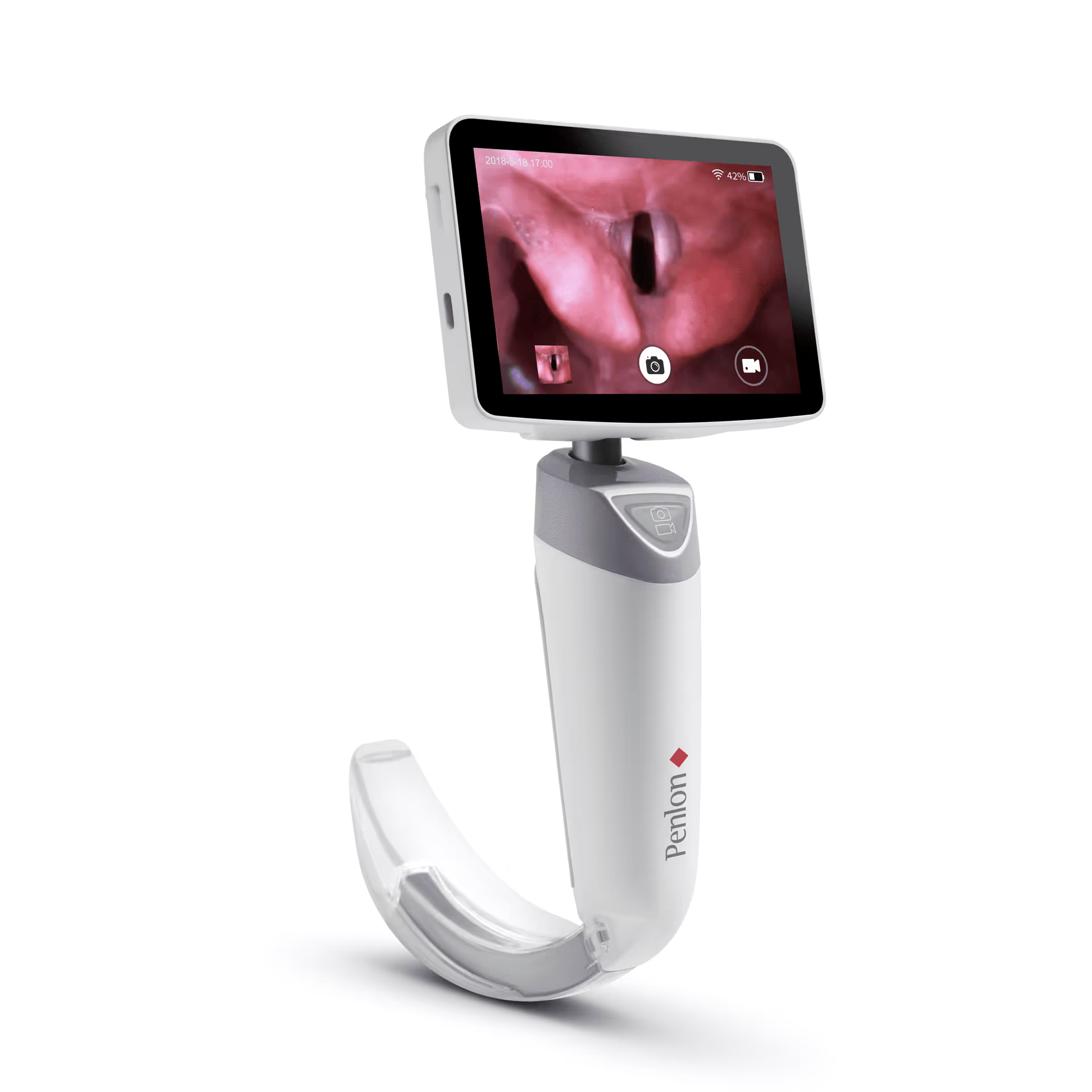
Product Design, Sketching, 3D Modelling, 3D Printing
Pushkar Ingale
(Mentor)
Cohesive Labs, Pune
May '21 - July '21
3 Months
This was a product design exercise done during my internship at Cohesive Labs, Pune. A laryngoscope is a critical device used in first response to insert the ventilator pipe in the throat. This was an explorative project delving into understanding and creating forms which follow this very specific function.
The prototype was 3D printed and shipped off for testing. The 3D printed model was used to better understand the ergonomics and the physical space it took. Various grips and pressure points were tested against the 3D printed model.
I joined the project when a few critical elements of the design were already decided. The lever points and the internal housing for the camera were already created. My task was to explore the form around the constraints. It was also to understand and experiment with different 3D printing methods.
The following lever points were marked out to facilitate the movement of the tip of the laryngoscope. The aim was to deliver as much torque as possible to the tip with the lever system running parallel only on one side of the internal housing.
The housing was milled out of aluminum and would house a camera with a wire running through it. The curve of the housing was determined as the optimal, to help the tube slide in and out easily out of the outer casing.
The market broadly divides the type of laryngoscope among two categories. One is a cheap and sturdy one made out of stainless steel, where the hook can be removed and folded. The second one is a more advanced variety where the hook has a camera attached with a screen on top of it and the assembly cannot be dismantled.


Through countless sketches and explorations, we tried to figure out the form of the handle. I've never drawn so many cubes before.

Some explorations were done by drawing over an already existing base cuboid, also by sticking paper to differentiate textures.

This project gave me a better understanding of various 3D printing methods with it's constraints and possibilities. The models were 3D printed using a resin printer.

The final prototype was
